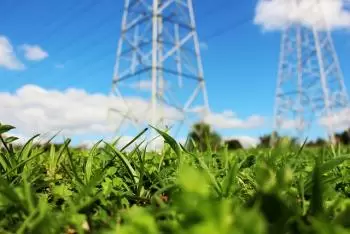
Nuclear energy is not a renewable source because the nuclear fuel used does not regenerate itself.
Nuclear energy comes from the fission of uranium atoms. Uranium is a naturally occurring material. However, nature does not produce the tons of uranium that man consumes to produce electrical energy.
On the other hand, uranium is not a fossil fuel either. Uranium is an element present in some terrestrial rocks that do not derive from a "fossilization" process comparable to oil, natural gas, and coal.
When is an energy source considered renewable?
It is considered a renewable resource when the energy resources to use it are renewable or inexhaustible on a human scale. We obtain this type of energy from processes that occur in the environment or renewable organic resources from natural resources.
Some examples of renewable energy sources are:
-
Solar power uses solar panels to create electricity using sunlight.
-
Wind energy (takes advantage of the kinetic energy of the wind)
-
Hydraulic energy (takes advantage of the potential energy of the water stored at a certain height)
-
Tidal energy (takes advantage of the gravitational potential energy of the rise and fall of the tides).
-
Geothermal energy (takes advantage of the heat inside the Earth).
-
Biofuels (energy is obtained from forest resources such as wood, vegetable oil, etc.).
Is nuclear energy clean energy?
Nuclear power cannot be considered a spotless energy source.
Although it does not generate greenhouse gases, it does generate radioactive products that, if not managed correctly, are very harmful to the environment and life in general.
Although nuclear power plants are a type of thermal power plant just like plants that use coal or natural gas as fuel, in all cases, the purpose is to generate energy.
The emission of polluting gases generated in most thermal power plants is a problem because they increase global warming.
However, nuclear power plants generate radioactive waste that can remain radioactive for thousands of years. These nuclear wastes are the products of nuclear fission reactions that are generated within the reactor.
How does a nuclear power plant work?
A nuclear power plant is a type of thermal power plant. The objective of thermal power plants is to generate electrical energy from a heat source. Typically, this heat source is fossil fuels such as coal or natural gas. They use the heat energy that the nuclear reactor produces to produce steam. The steam drives giant steam turbines connected to an electric generator.
In the case of a nuclear power generation plant, the heat source is obtained from nuclear energy.
When will the uranium run out?
At the moment, the uranium ore mining resources are far from being exhausted.
According to the estimates in the report "Uranium 2016: Resources, Production and Demand" published by the Nuclear Energy Agency and the International Atomic Energy Agency with data updated to 2015, global uranium reserves amount to 7.6 million tons. Only 0.1% more than estimated in 2013.
This figure varies from year to year depending on investments in new research: the more uranium it looks for globally, the more it finds.
The world's largest uranium consumers are the European Union and North America, as data from the NEA-IAEA report shows:
Even adding uranium consumption not related to energy production, such as those related to nuclear medicine, it is clear that uranium is not renewable but will not end anytime soon.
Why oil, coal, and natural gas are not renewable?
Current reserves of oil, natural gas, and coal are limited. One day they will end, even if experts and scientists disagree on when that day will come. According to estimates (based on CIA data ) made by Ecotricity, a British company active in renewable energy supply, if we stopped looking for new fossil fuels from today, we would be dried in 2088.
What is certain is that one day we will have extracted them all and that, to have more, we will have to wait millions of years.
As the very definition of "fossils" says, this is because oil gas and coal are created underground after millions of years, during which vast masses of organic material accumulate, compact, and finally transform into energy-rich molecules in the form of carbon.
This carbon is then put back into circulation in CO2 at the end of the combustion of fossil fuels, causing the well-known problems of global warming and climate change.